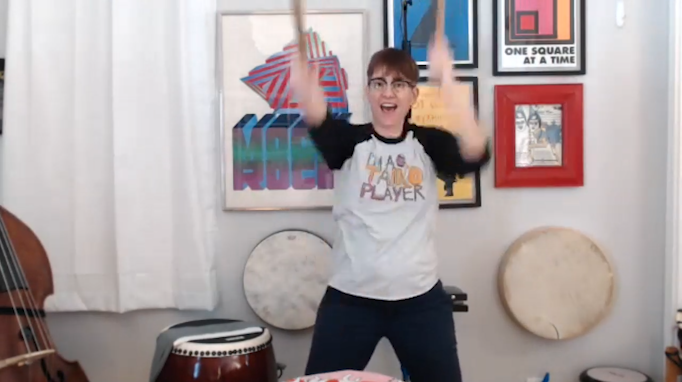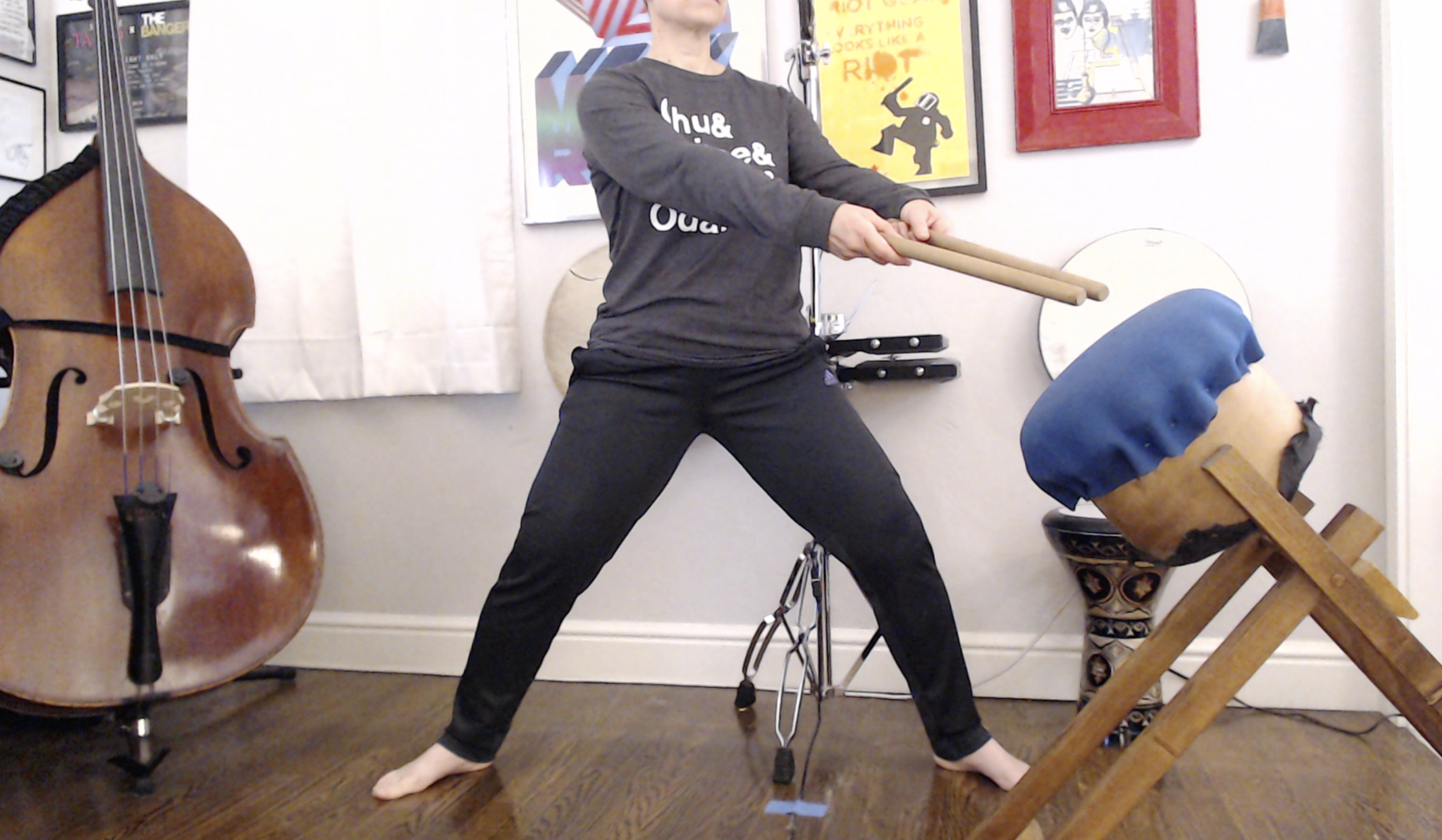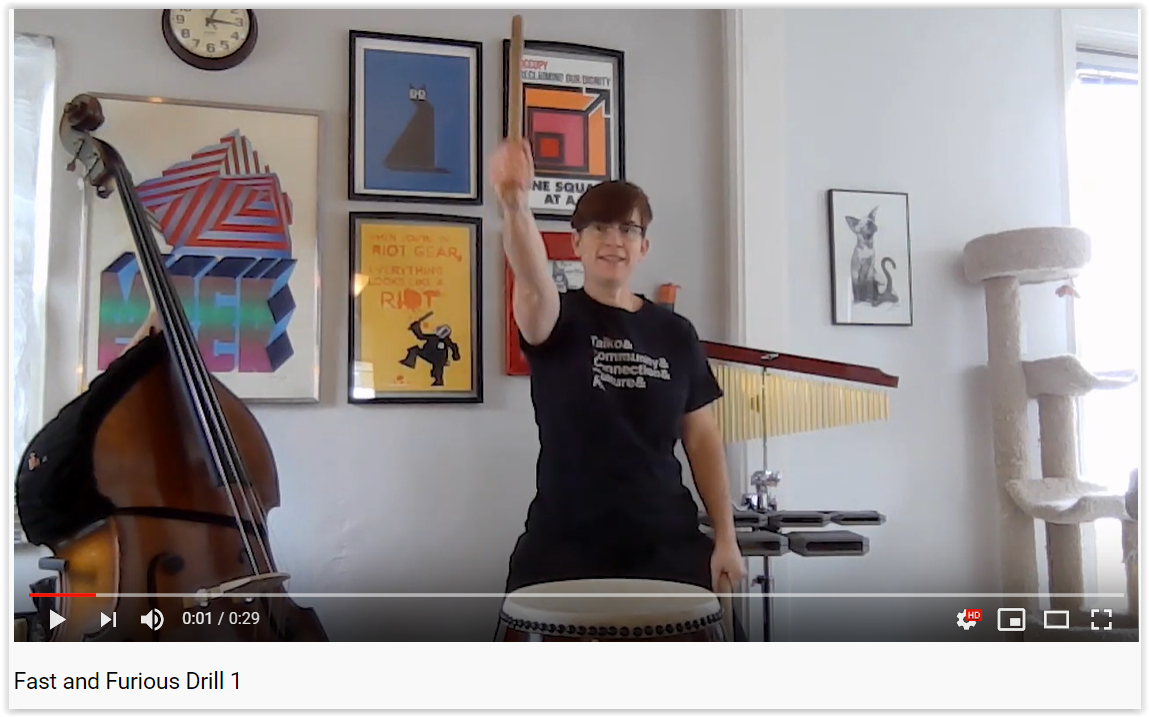Looking for drills to help folks stay relaxed while playing at speed? Look no further than Kristin’s Fast and Furious series! Fast and Furious 3 (FF3) helps you practice fast hands and timing precision while moving between the kawa and fuchi. (Click these links for posts on FF1, FF2, and FF4.) Here’s FF3 written out in kuchishoka and western notation, and here's a video of our friends at Taiko SOBA demonstrating the drill. Thank you SOBA for the video assist!
Challenge yourself in FF3 by increasing tempo while staying relaxed. The tempo shifts should happen in the final four “don ka” of each full repetition (see Taiko SOBA’s demo video for an example.) If you’re using this for solo practice, pay attention to your hands, arms, body - even your face! - while you speed up. As soon as you feel yourself tensing up, stop, shake it out, and start again at a tempo where you know you can stay relaxed. Pay attention (as always) to extension, stance, and other kata basics. Many players, especially newer players, speed up by bringing their arms closer into their body or cutting other kata corners. Fight that urge!
For everyone who’s back to in-person practice, add a straight teke teke jiuchi under FF3, as SOBA does in the video. The shime player drives the speed ups. (It’s a great way to practice gradual tempo changes.) The shime player can also be the one who watches people for tension and stops the group when they see it.
Let us know if you try FF3, and happy teaching!























